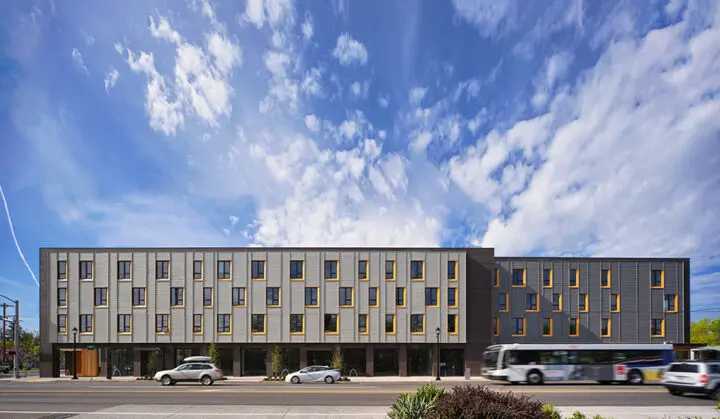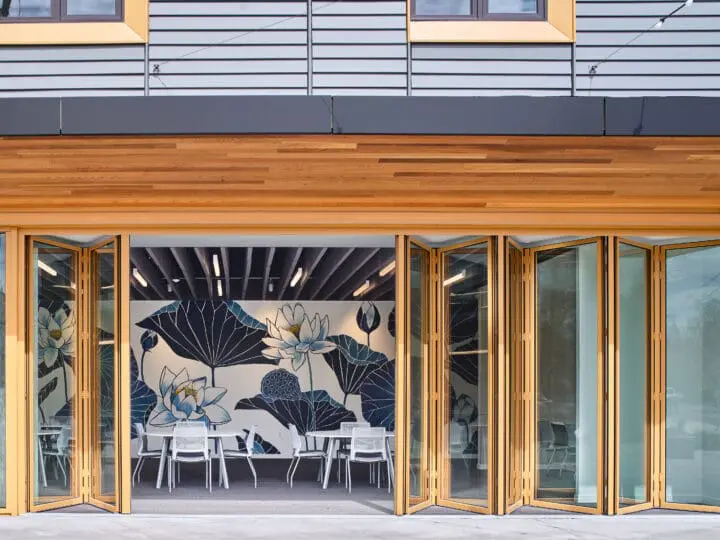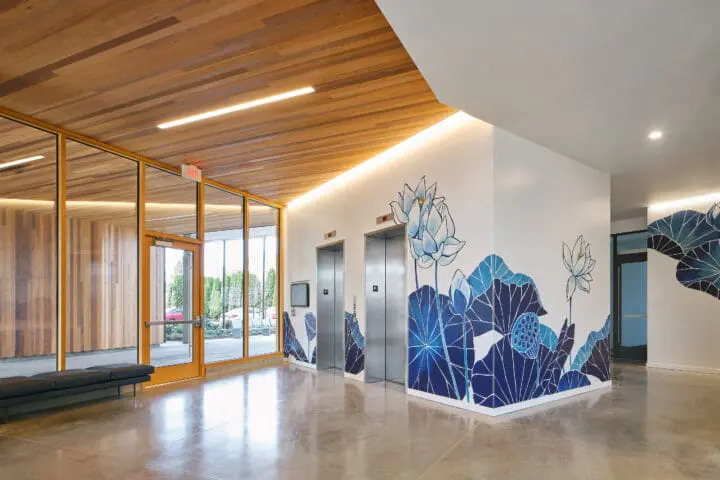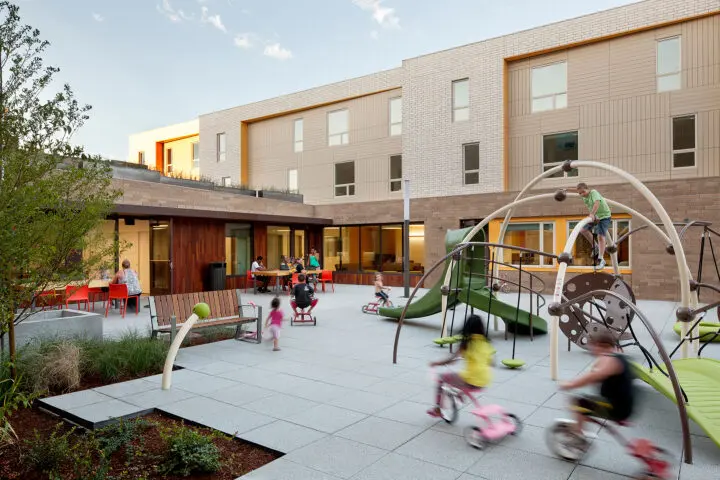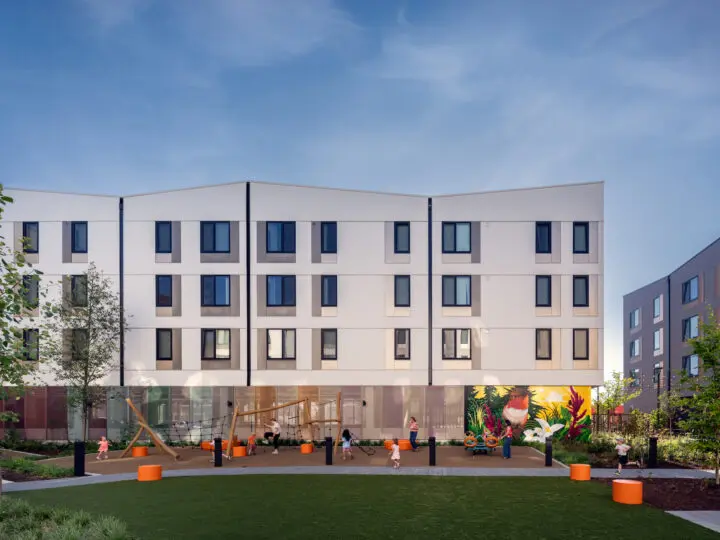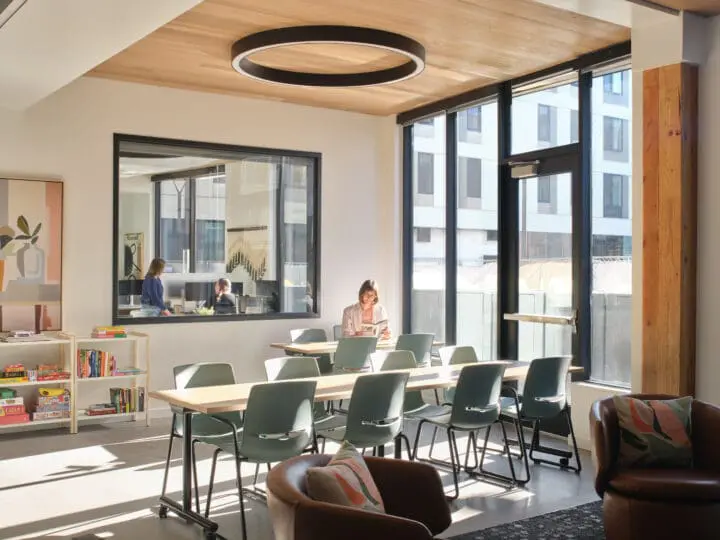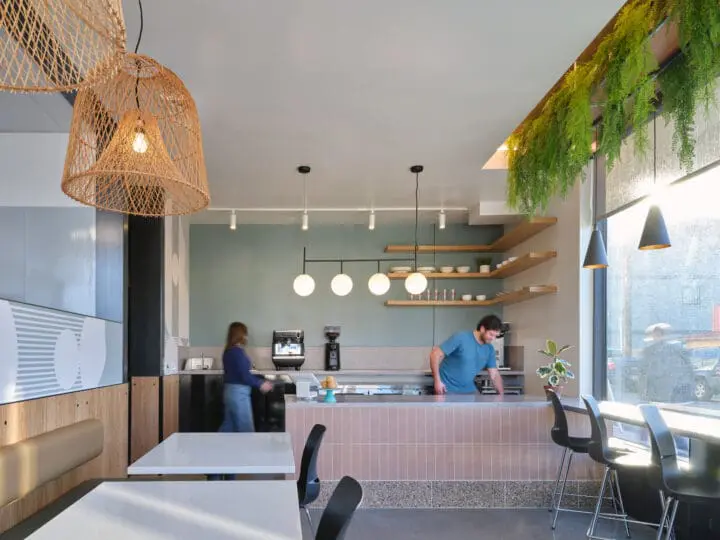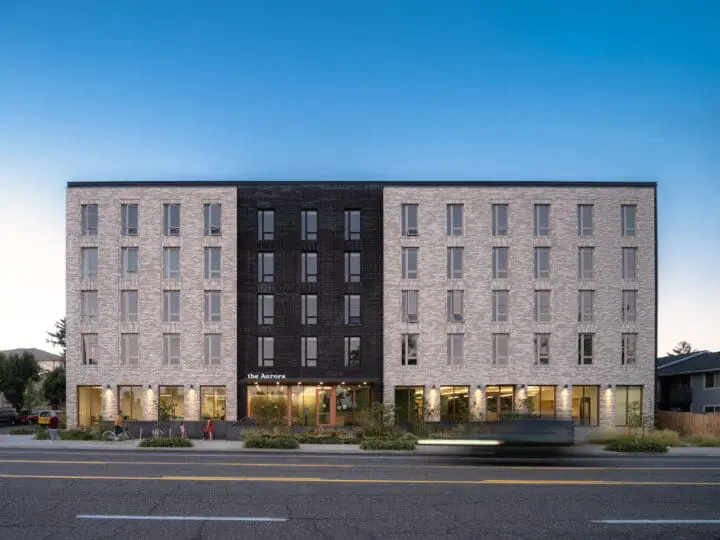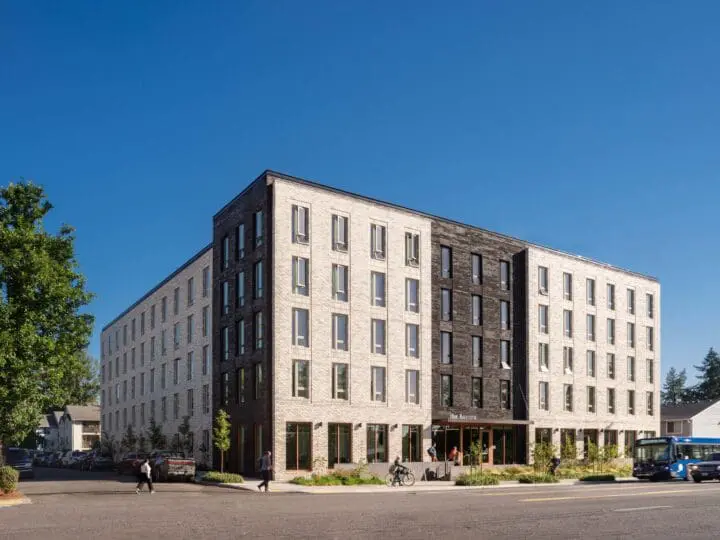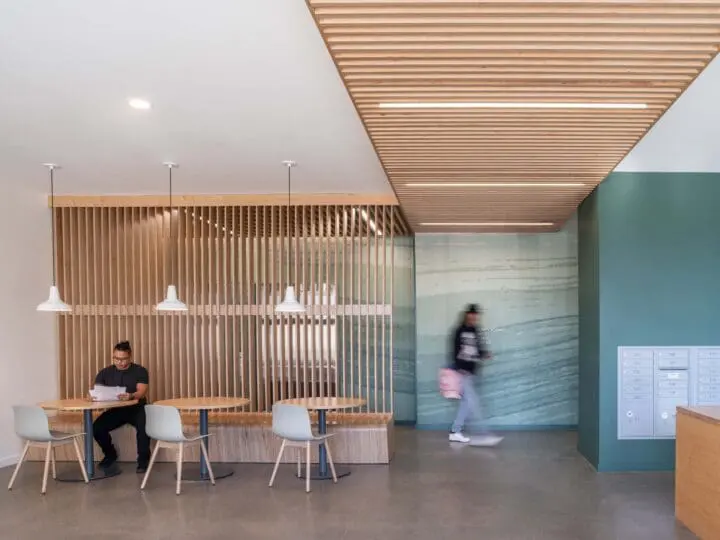
73Foster
An equitable, affordable housing community, 73Foster was designed with families and people with disabilities in mind.
Project Details
Location
Portland, OR
Client
REACH Community Development
Year Completed
Anticipated Fall 2026
Project Size
56,915 sq. ft.
64 units
Certification
Targeting Earth Advantage Platinum
Land Recognition
We have a responsibility to not only acknowledge but also elevate Native communities and their needs. This project sits in the area currently known as Portland, which encompasses the traditional village sites of the Multnomah, Wasco, Cowlitz, Kathlamet, Clackamas, Bands of Chinook, Tualatin Kalapuya, Molalla, and many other tribes who made their homes along the Columbia River.
Educating ourselves is an important action. We encourage you to explore the stories of these communities through Native-led resources like David G. Lewis, PhD’s The Quartux Journal and Leading with Tradition.
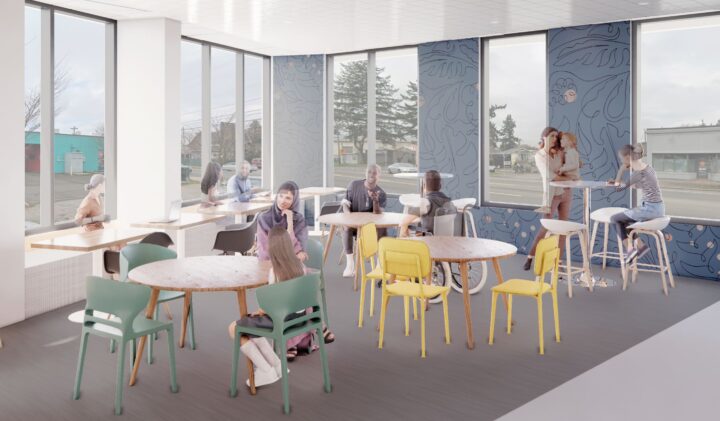
Affordable Housing That Goes Above & Beyond
Holst partnered with Community Vision, a local disability advocacy organization, to design beyond basic accessibility codes—creating spaces that support residents of all abilities, including those who are hard of hearing, have limited mobility, low vision, or are neurodivergent. The building will provide 64 affordable units, 22 Permanent Supportive Housing (PSH) units, and more than double the required amount of Type A (accessible) units, which include ample turning radius space, lower shelving, lever-type door hardware, as well as lower kitchen workstations and lavatories.
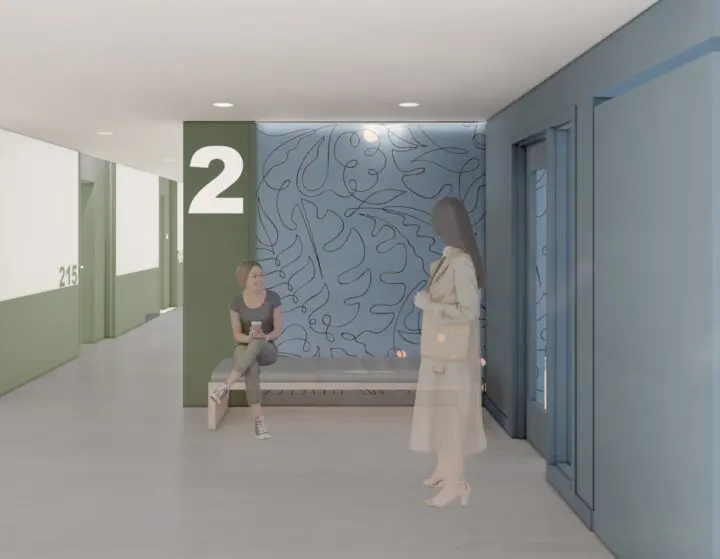
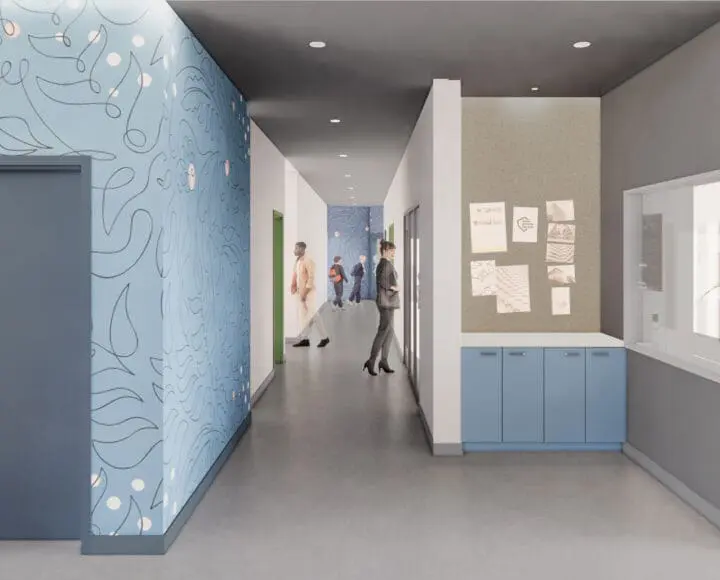
Trauma-Informed, Thoughtful Design
Design decisions throughout the building create an equitable, welcoming environment for all by prioritizing natural light, views of nature, and sound mitigation. Guided by trauma-informed principles, the team chose a calming palette of blues, greens, and grays and emphasized daylight access across all spaces. Wide corridors, generous ADA clearances, ramp access on the main level, and a central elevator and stair core ensure the building is easy to navigate for everyone.

A Welcoming Entrance
The lobby will include a lounge with seating areas and resident mailboxes. An on-site staff office will provide resident services.
Inclusive Design Features
The team created a universal wayfinding strategy by incorporating contrast, color, texture, and change in ceiling heights to delineate various spaces and zones. Blue indicates public amenities, green marks semi-private zones, and gray highlights staff access, while the central mural specifies vertical circulation.
Each space will offer various seating options and configurations in contrasting colors. Carpet will be used to signal locations with loose furniture so that low-vision users will know to be cautious. Special consideration was given to making public amenities visible, which will give residents the option to assess the space and its activity level before entering.

Community Spaces
73Foster’s community room will be a flexible space for all kinds of events and provide a full, accessible kitchen. Each building level will have a dedicated laundry room, bike room, and trash room.
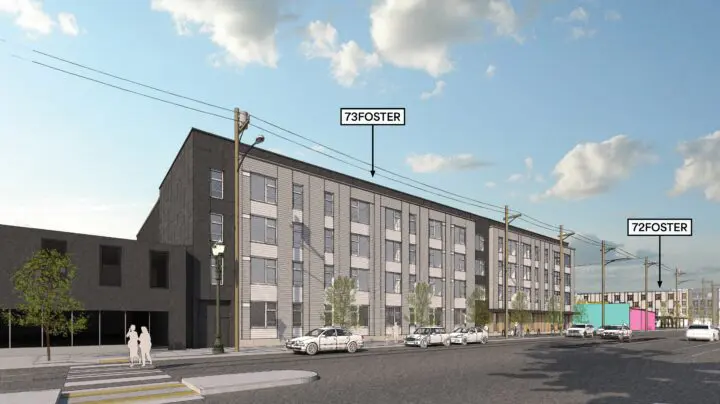
Neighborhood Connections
Intended as ‘sister buildings,’ 72Foster and 73Foster are located down the street from one another, each flanking the popular Portland Mercado. To visibly connect 73Foster with 72Foster and the Mercado, 73Foster’s entry and community room location were chosen to create an open pedestrian environment that gives access to all three spaces. Both buildings are going to be of similar height, and materials on the exterior were selected to create a cohesive character on the street. 73Foster’s main entrance is designed to contrast the rest of the building to make it easier to identify, which will support the disabled community but is also a nod to the entrance and breezeway at 72Foster.
The development team has prioritized access needs that are often overlooked in the design of buildings. We are looking forward to creating a space that is welcoming to people of all backgrounds and abilities.— Alma Flores, Director of Housing Development at REACH





